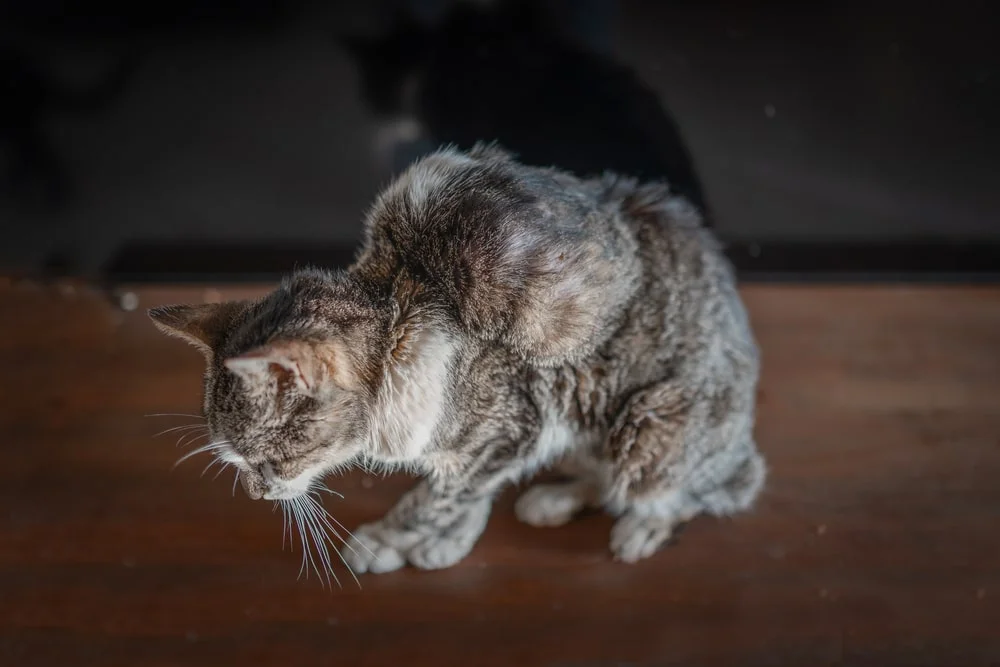PET HEALTH
Finding lumps on your cat’s skin can be alarming, but not all masses are the same. One lump you may come across is a lipoma. While generally a harmless tumor, a lipoma may cause your cat discomfort or need to be removed for other reasons. The cost of removing a lipoma can reach up to $5,000 or more, depending on different factors.1
Let’s take a look at what feline lipomas are, the treatments, and how cat insurance could help you cover costs.
A MetLife Pet Policy May Help You Cover Lipoma Costs
What Are Lipomas in Cats?
Lipomas are benign tumors made of fatty tissue. They’re typically soft lumps found under the skin where fat grows. For cats, lipomas may show up anywhere on their body, but the abdomen, back, chest, and upper legs are common.1
Even though lipomas are benign, it’s a good idea to get any lump on your cat checked by a veterinarian, since it may be hard to tell the difference between a lipoma and a cancerous tumor.
Types of feline lipomas
There are a few different types of lipomas in cats:1
- Simple lipomas: Small tumors that develop in the fat layer just underneath the skin, usually on a cat’s stomach, sides, or back.
- Infiltrative lipomas: A lipoma that works its way into the tissue surrounding fat cells. These tumors are very rare and usually located in a cat’s thigh.
- Myelolipomas: A benign tumor formed from both fat cells and hematopoietic cells (certain blood cells).
Call your vet if you think your feline friend could have any of the above types of cat lipomas.
Causes of feline lipomas
The cause of lipomas in cats is unknown. Although lipomas mostly develop in fat layers, obese cats typically aren’t more at risk of lipomas than cats at a healthy weight.1
While any cat can develop lipomas, the average age of a cat with a lipoma is 9.6 years old, and domestic shorthair and Siamese cats are more commonly affected.1 Also, male neutered cats are more likely to have a lipoma.2
Symptoms of Cat Lipomas
Most cats won’t have any symptoms besides the presence of a lipoma. While rare, it’s possible that a lipoma could grow to be large enough to affect movement or breathing (if it’s located inside the chest). A large lipoma in the stomach could lead to vomiting and a decrease in appetite.1
As for the lump itself, feline lipomas are typically soft, moveable masses — although they can be more firm.1 Sometimes, lipomas will combine with the fat tissue they are next to, which can make it hard for a vet to find the tumor’s edges.2
Even if a lump on your cat is easy to spot, you likely won’t be able to tell if it’s a lipoma or another kind of tumor without a proper vet diagnosis.
Diagnosing a Feline Lipoma
To diagnose a lipoma, your vet will likely use a needle to extract cells from the lump to view under a microscope. If vets can’t make a complete diagnosis from this procedure, they may biopsy the tumor, which involves surgically removing part of the tumor and sending it off for a more thorough diagnosis. If your cat has an infiltrative lipoma, a surgical biopsy is needed.1
Treating Your Cat’s Lipomas
After diagnosis, your vet may recommend surgically removing the lipoma as a form of treatment, especially for infiltrative lipomas. However, since these tumors are benign, your cat typically will not need lipomas removed if they’re not causing your kitty discomfort. In this case, your vet may ask you to monitor the lipoma for changes over time, specifically looking for a sudden size increase or changes in the skin around the lipoma.1
After getting a lipoma surgically removed, your cat will probably spend a day recovering from anesthesia and will need sutures removed during a follow-up visit. Your vet will likely send you home with medications for your kitty to combat inflammation and infection during recovery, and your cat may have an activity restriction for up to two weeks.3
Lipoma in cats treatment cost
If your vet recommends surgical removal, costs can vary depending on where you live, your cat’s health condition, the location and size of the tumor, and how many lipomas are being removed. On the lower end, a simple tumor removal procedure could cost around $500.3 For a more complex surgery, the cost could go up to $5,000 or more.1
Before the procedure, your cat will undergo diagnostic tests — to ensure they’re healthy enough for anesthesia and surgery — which will add to the total vet bill. The needle biopsy needed before surgery can cost between $50 – $200 as well.1
You can typically expect to pay for medications and a follow-up visit after the surgery, too.
Pet Insurance Can Help You With Cat Lipoma Treatment Costs
While lipomas typically aren’t something to worry about, if removing them is recommended, the unexpected cost may create tension in your budget. Fortunately, MetLife Pet offers cat insurance policies that can help you cover diagnostics and treatment costs, including surgical removal recommended by a vet.
You shouldn’t have to choose between your finances and getting your beloved cat the best care they need. Get a free quote today to see how MetLife Pet Insurance can help you protect your cat and your wallet.


